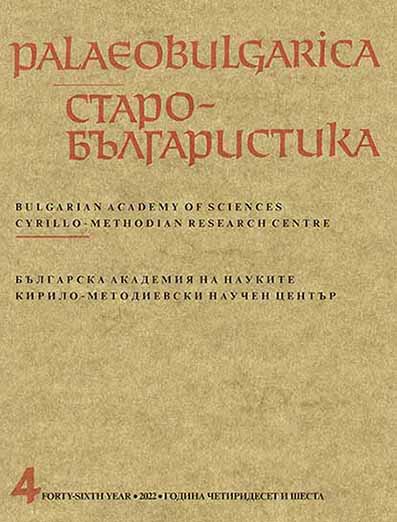Лексический ряд брань – воина – рать в старославянских и восточнославянских источниках XI–XV вв.: Интерпретация квантитативных формул (На материале исторического корпуса „Манускрипт“)
Lexical Row of bran’ – voina – rat’ in Old Church Slavonic and East Slavonic Sources from 11th–15th Centuries: Interpretation of Quantitative Formulas (Based on the Material of the Historical Corpus “Manuscript”)
Author(s): Oleg F. ZholobovSubject(s): Language studies, Language and Literature Studies
Published by: Кирило-Методиевски научен център при Българска академия на науките
Keywords: lexical row; Old Church Slavoinic; Old East Slavonic; quantitative formulas; semantic interpretation.
Summary/Abstract: The historical corpus “Manuscript” contains voluminous data, presented in subcorpuses with a number of copies of the Gospels, Apostolos, Parimeinik, Parenesis, chronicles, and others. The quantitative ratios of lexemes form quantitative formulas that allow determining or clarifying the revisions of translations, identifying and characterizing the structural parts of texts, as well as the dynamics of changes in the lexical range and semantic structure of lexemes. Thus, quantitative formulas correlate in an exact way with different types of texts: the full service Gospel (“tetra-gospel”), the short aprakos and the full aprakos, the commentary and continuous Apostolos. The structural parts of the Laurentian and Ipatiev Chronicles are characterized by contrasting types of quantitative formulas. In the Kievan Chronicle, the word rat’, given its frequency, acts as the central unit of the princely circle sociolect. In the Galicia-Volyn chronicle, we witness a key and turning point in the quantitative growth in the lexeme voina usage, which replaces the lexemes bran’ and rat’ ‘war’, due to voina’s communicative advantages: it is monosemantic and opposite to the polysemantic lexemes bran’ and rat’.
Journal: PALAEOBULGARICA / СТАРОБЪЛГАРИСТИКА
- Issue Year: 2022
- Issue No: 4
- Page Range: 79-99
- Page Count: 21
- Language: Russian
- Content File-PDF

